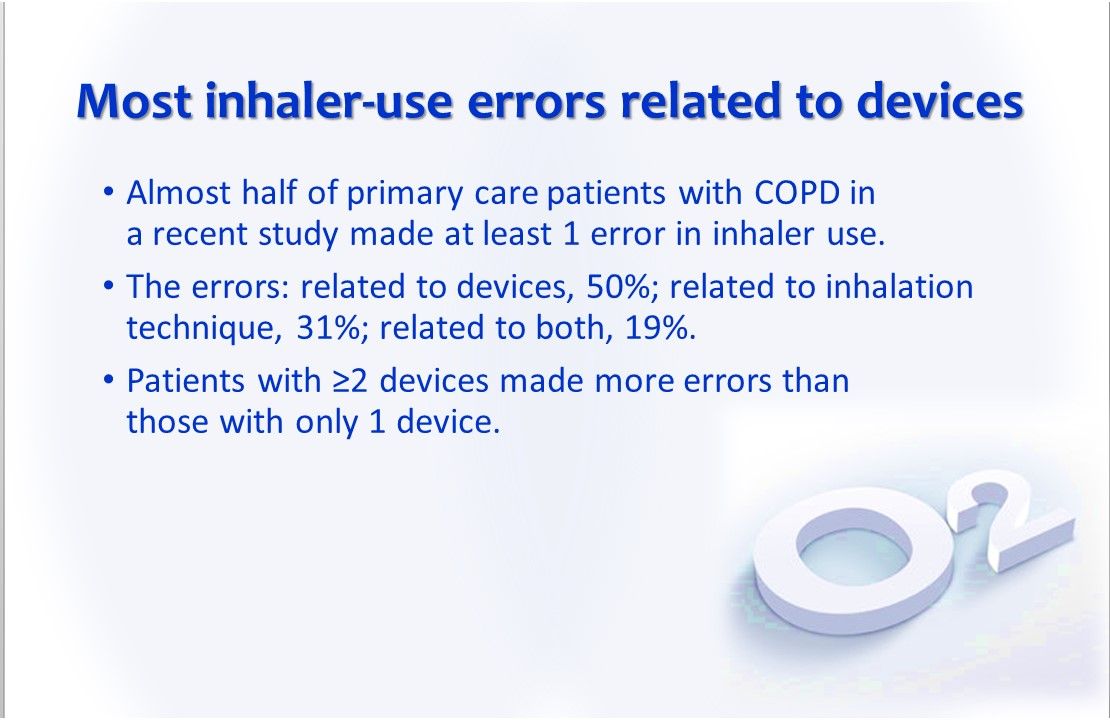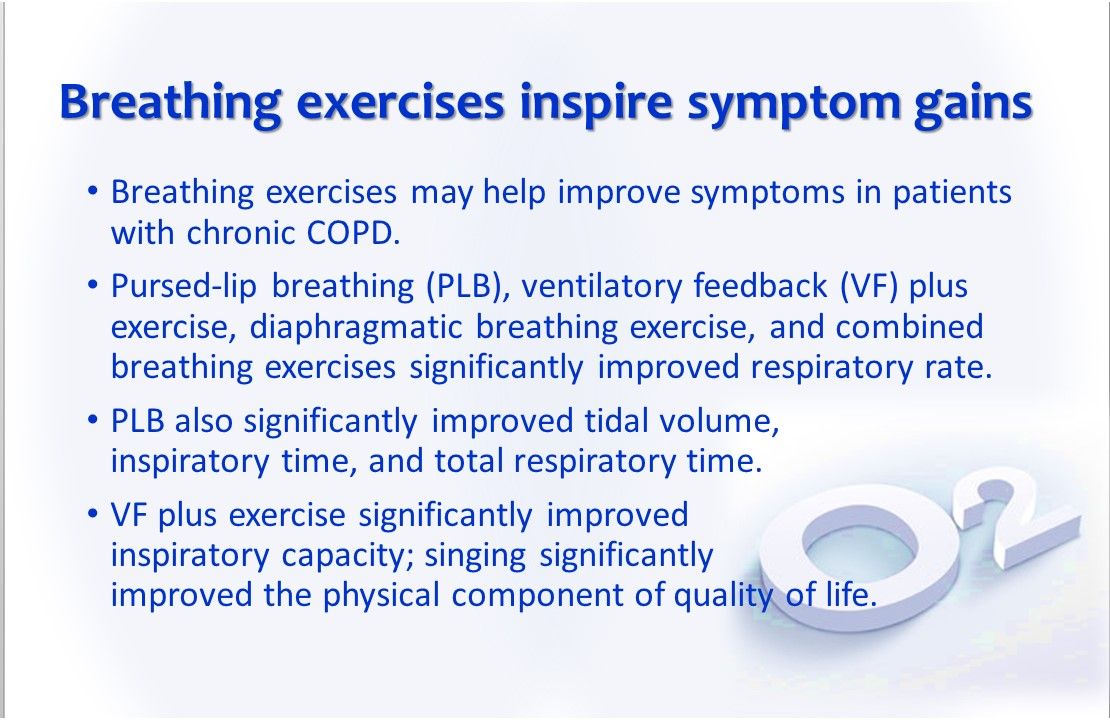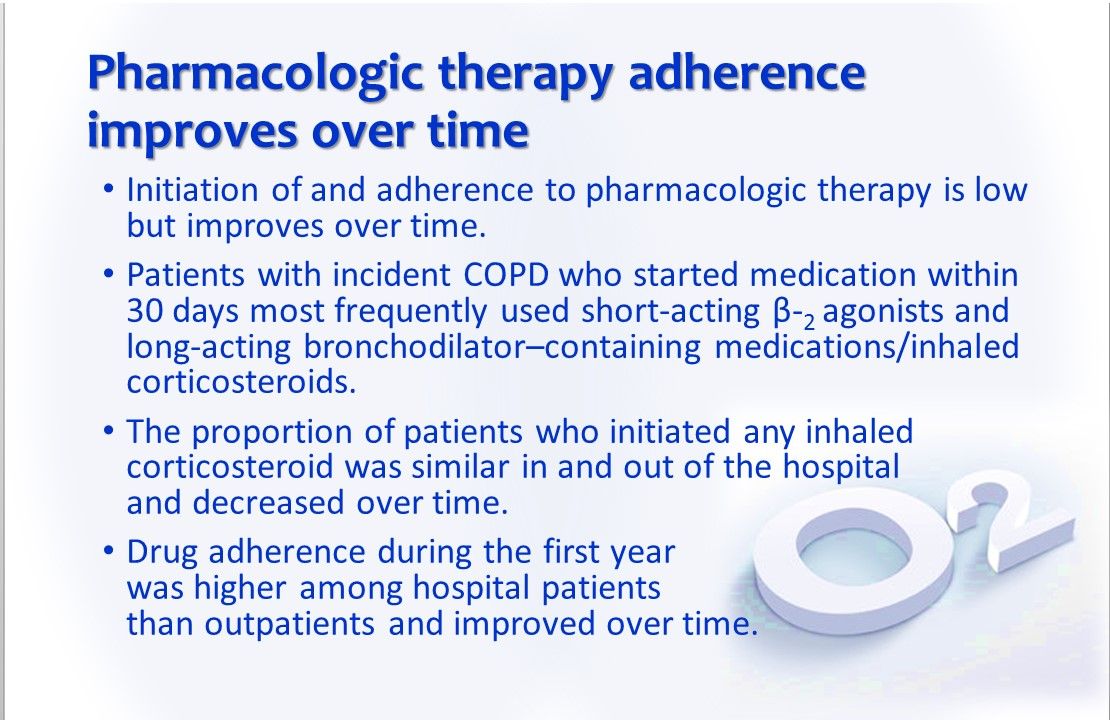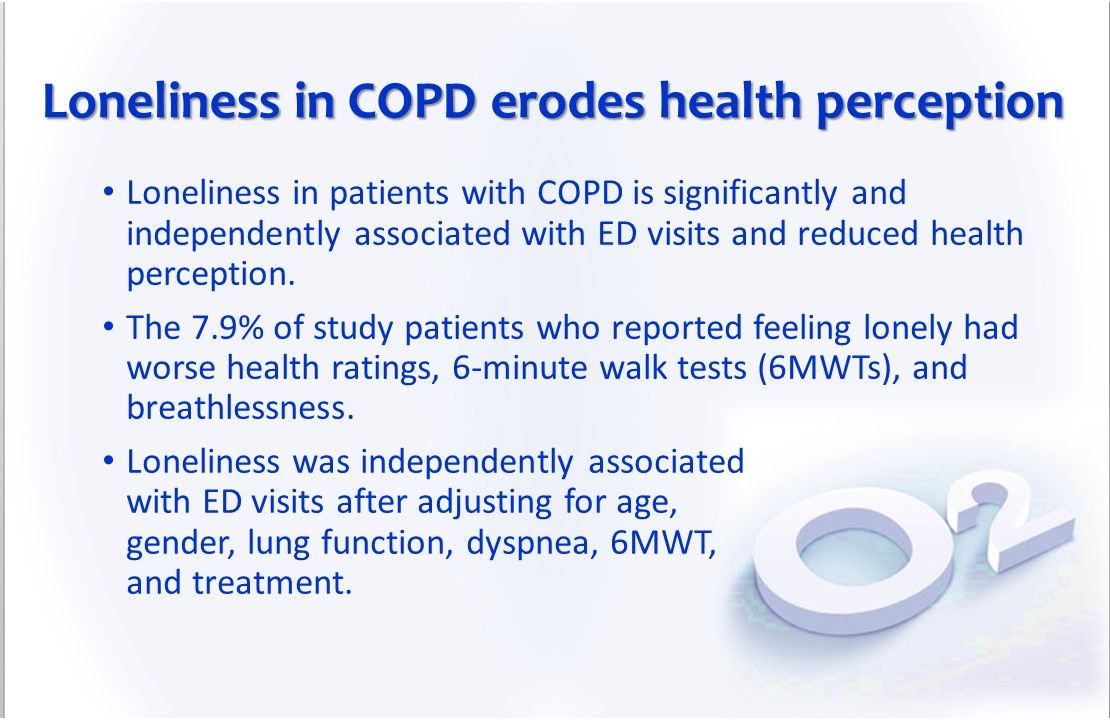© 2025 MJH Life Sciences™ , Patient Care Online – Primary Care News and Clinical Resources. All rights reserved.
COPD Insights for Primary Care: 5 New Studies
Findings: Don’t blame patients for all inhaler-use errors; singing may help improve breathing, QOL; Rx adherence does improve over time; plus 3 more outcomes of interest.

Most inhaler-use errors related to devices. Close to half (45%) of primary care patients with COPD made at least 1 error in inhaler use in an observational study. Of them, 50% made errors related to devices, 31% made errors related to inhalation technique, and 19% made errors related to both devices and inhalation technique. Patients with ≥2 devices made more errors than those with only 1 device, although the difference was not statistically significant. In a 2017 study, oneâfifth of patients with COPD reported being unsure of how or when to use their inhaler and one-fourth said they regularly questioned whether their inhaler was working properly.

Breathing exercises inspire symptom gains. Breathing exercises may help improve symptoms in patients with chronic COPD, according to low- to moderate-quality evidence in a meta-analysis of 19 studies. Pursed-lip breathing, VF plus exercise, diaphragmatic breathing exercise, and combined breathing exercises significantly improved respiratory rate. PLB also significantly improved tidal volume, inspiratory time, and total respiratory time. VF plus exercise significantly improved inspiratory capacity, and singing significantly improved the physical component of quality of life. All of the breathing exercises did not improve dyspnea significantly.

Pharmacologic therapy adherence improves over time. For patients with COPD, initiation of and adherence to pharmacologic therapy is low but improves over time. In the 56.3% of study patients with incident COPD who started medication within 30 days, short-acting β-2 agonists and LABA/ICS were used most frequently (60.5% and 41.6%, respectively); ICS without LABA was used in 14.2% of patients and as monotherapy in 4.5% of patients. The proportion of patients who initiated any ICS was similar in hospital and outpatient settings and decreased over time in both. Drug adherence during the first year-54.3%-was higher among hospital patients than outpatients and improved over time.

Older adults with COPD use more synthetic cannabinoids. Older adults who have COPD use incident off-label oral cannabinoids (nabilone, dronabinol) more frequently, and in more potentially concerning ways, than those who do not, according to a retrospective, population-based cohort study. The cannabinoid use occurred twice as frequently among older adults with COPD as in older adults without COPD (0.6% vs 0.3%), and older adults with COPD used synthetic cannabinoids for significantly longer durations and more frequently at higher doses. Because synthetic oral cannabinoids may have adverse respiratory effects, the findings raise possible safety concerns for older patients with COPD.

Lonelinessin COPD brings down health perception. Loneliness in patients with COPD is significantly and independently associated with ED visits and reduced health perception. Of 1218 patients with COPD analyzed in a recent study, the 7.9% who reported feeling lonely had worse health ratings, 6MWTs, and breathlessness. Loneliness was independently associated with ED visits after adjusting for age, lung function, dyspnea, 6MWT, treatment, and gender. The authors suggested that addressing loneliness of patients with COPD in the outpatient setting may contribute to improved health perception and less health care utilization.




